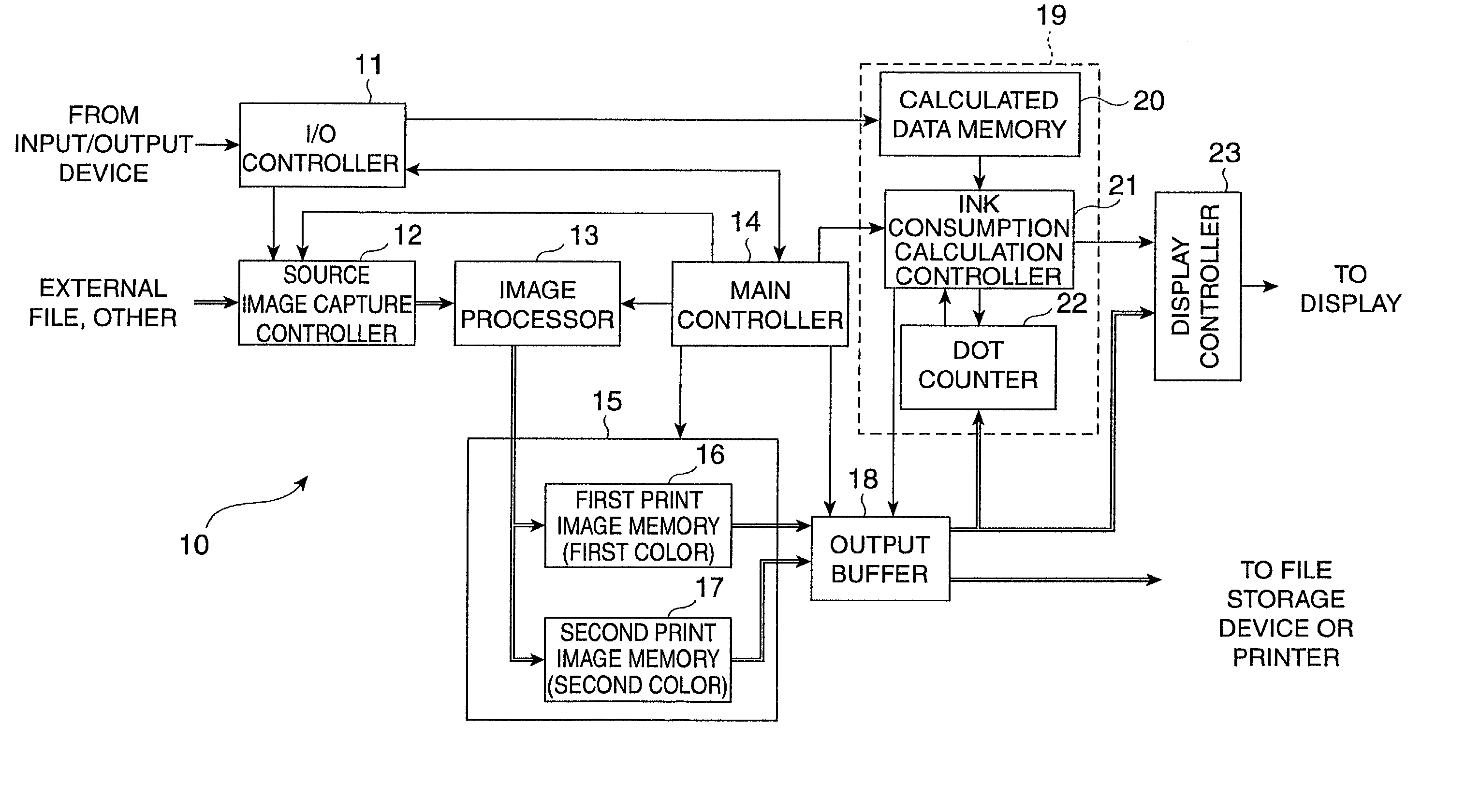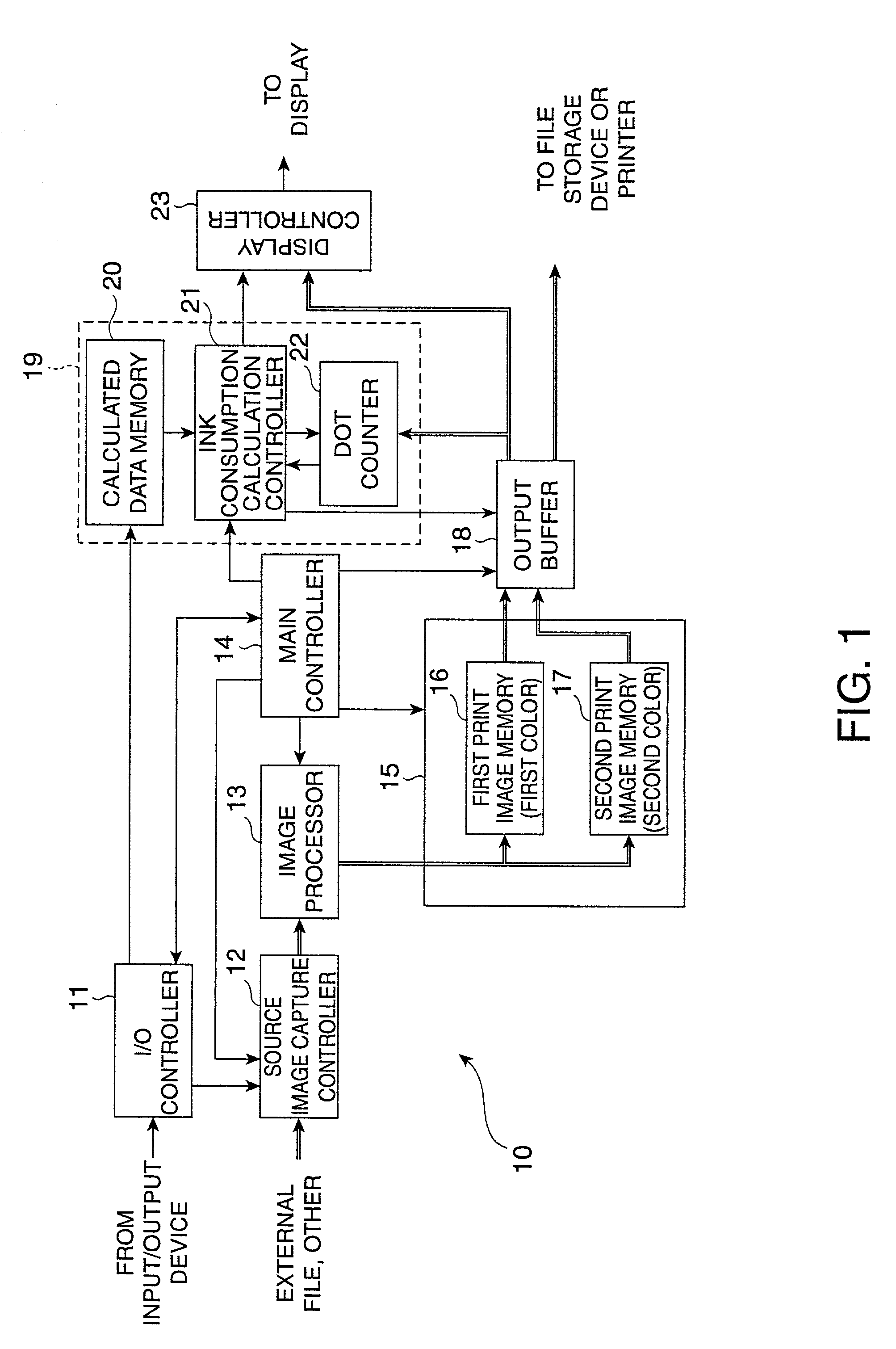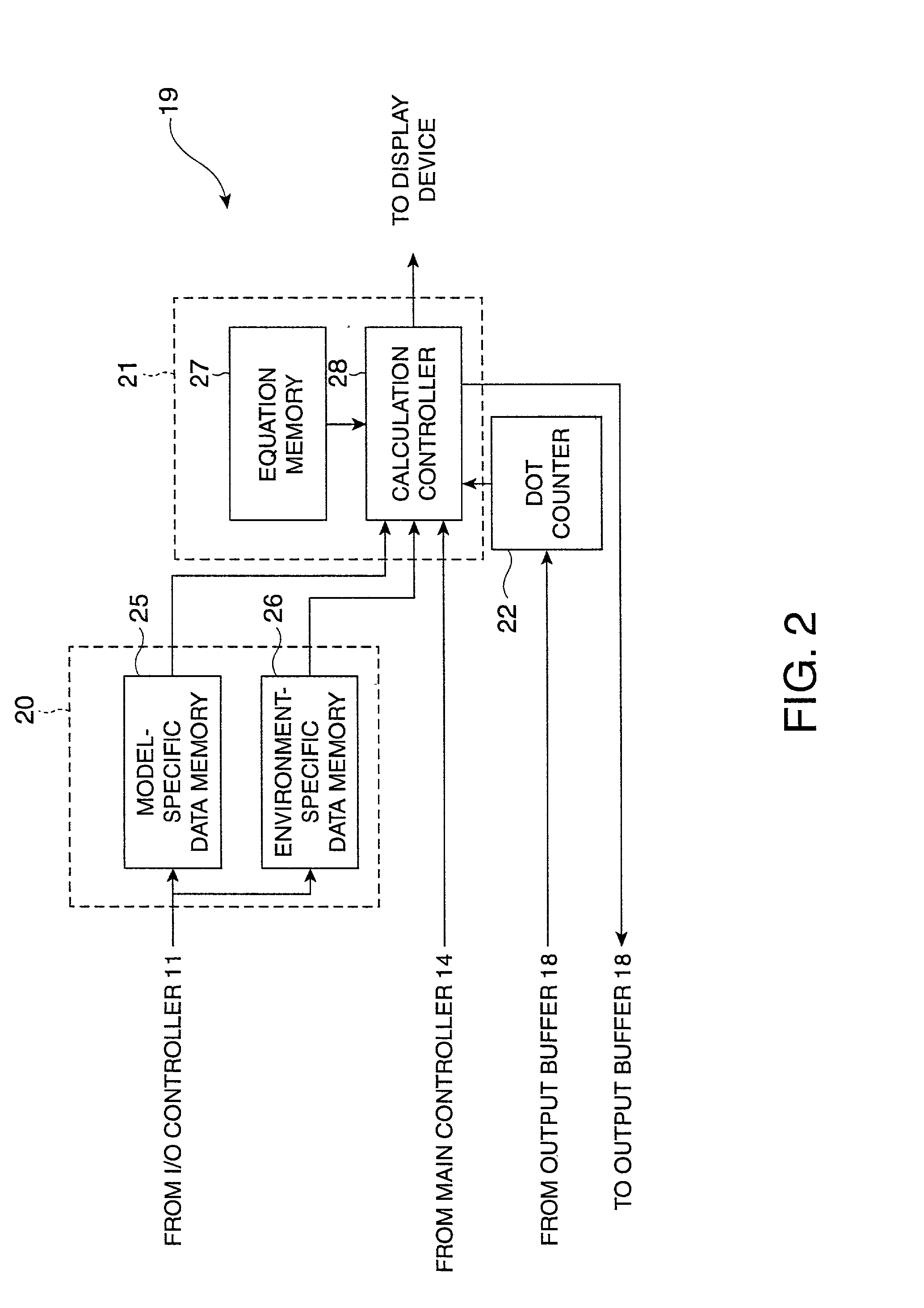Logo data generating system, logo data generating method, and data storage medium
a data generating system and logo technology, applied in the field of logo data generating system, can solve the problems of limited-color printers not being able to print full-color images or images containing many colors, printing takes longer, and operating costs are higher
- Summary
- Abstract
- Description
- Claims
- Application Information
AI Technical Summary
Benefits of technology
Problems solved by technology
Method used
Image
Examples
first embodiment
[0114] The ink consumption calculation and display step (S104) shown in FIG. 4 is described in further detail with reference to FIG. 5, which is a flow chart of the ink consumption calculation and display step (S104) shown in FIG. 4 according to this first embodiment of the invention.
[0115] When the image processing step ends and the print image data (logo data) is stored (S103, FIG. 4), it is determined if the stored logo data is a color image (S111). If not (S111 returns no), the total print dots N in the stored logo data is counted (S112). Once the total print dot count N is determined, the ink discharge Pi per dot discharged from the nozzle is read from internal memory (S113). Ink consumption Pt required to print the logo is calculated as dot count N.times.Pi, and the result is presented for confirmation by the user (S115).
[0116] If a color image is stored (S111 returns yes), the number of print dots in the logo data is counted for each color to obtain print dot counts N1 and N2...
second embodiment
[0117] An alternative ink consumption calculation and display process is described next with reference to FIG. 6, which is a flow chart of a cartridge life calculation process illustrating the ink consumption calculation and display step (S104) shown in FIG. 4. When the image processing step ends and the logo data is stored (S103 in FIG. 4), printer model-specific data such as the ink cartridge capacity (L) and ink consumed (C) by the head cleaning operation (S131), and environment-specific data such as the number of receipts printed per day (N), is read (S132). This model-specific data and environment-specific data is as described above with reference to FIG. 3.
[0118] The amount of ink used (R) to print one receipt is then calculated based on the read printer model-specific data and environment-specific data (S133). This per-receipt ink requirement (R) differs according to the size of the logo, whether a logo is printed, the size of the bar code, whether a bar code is printed, and ...
PUM
 Login to View More
Login to View More Abstract
Description
Claims
Application Information
 Login to View More
Login to View More - Generate Ideas
- Intellectual Property
- Life Sciences
- Materials
- Tech Scout
- Unparalleled Data Quality
- Higher Quality Content
- 60% Fewer Hallucinations
Browse by: Latest US Patents, China's latest patents, Technical Efficacy Thesaurus, Application Domain, Technology Topic, Popular Technical Reports.
© 2025 PatSnap. All rights reserved.Legal|Privacy policy|Modern Slavery Act Transparency Statement|Sitemap|About US| Contact US: help@patsnap.com



